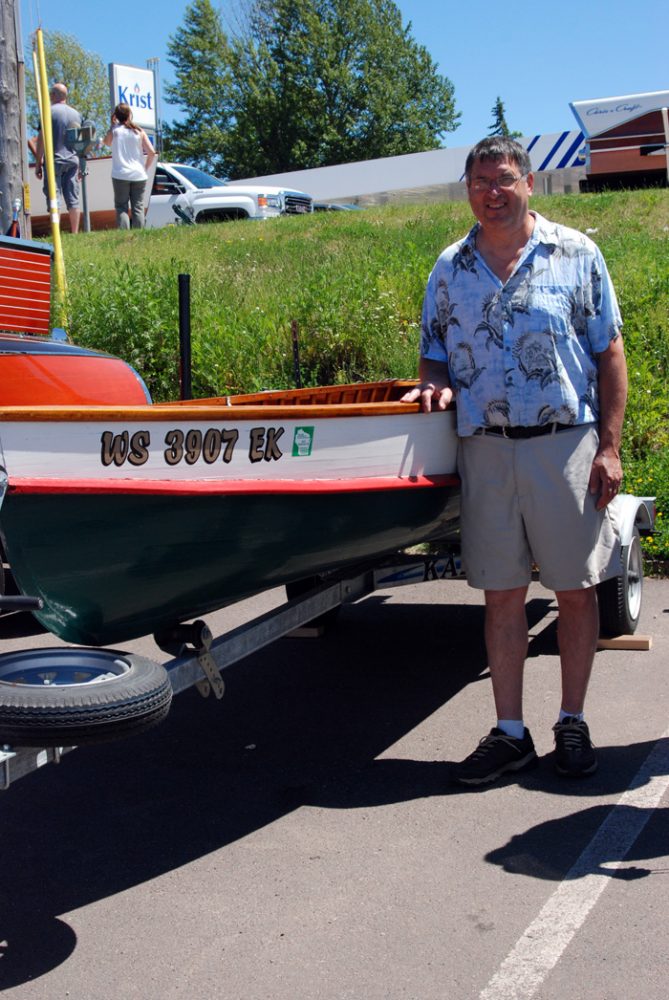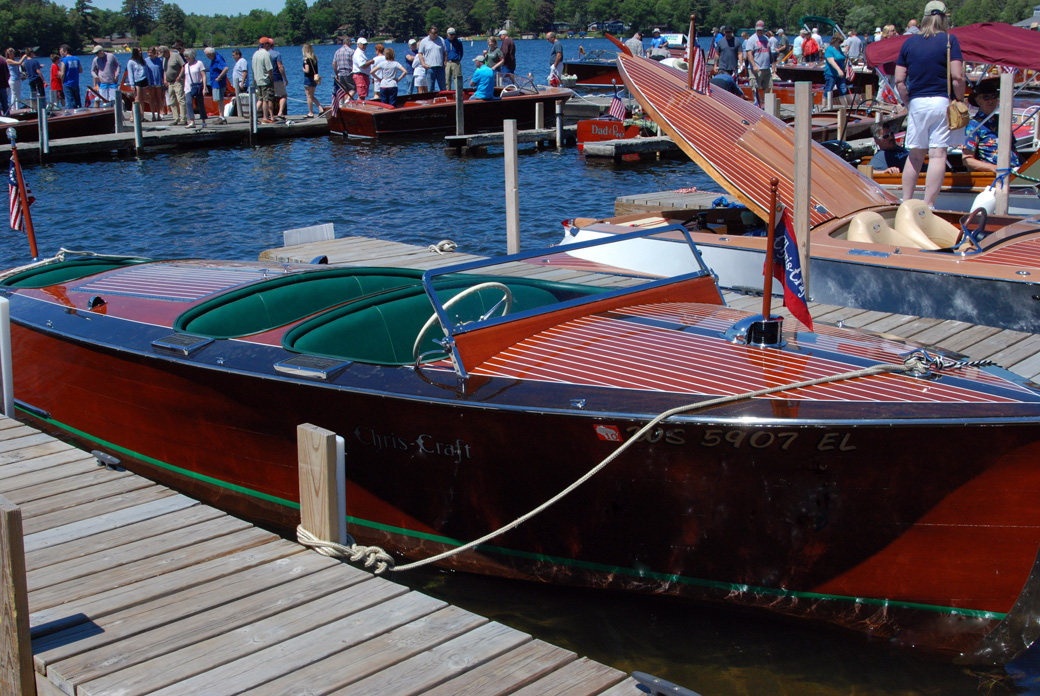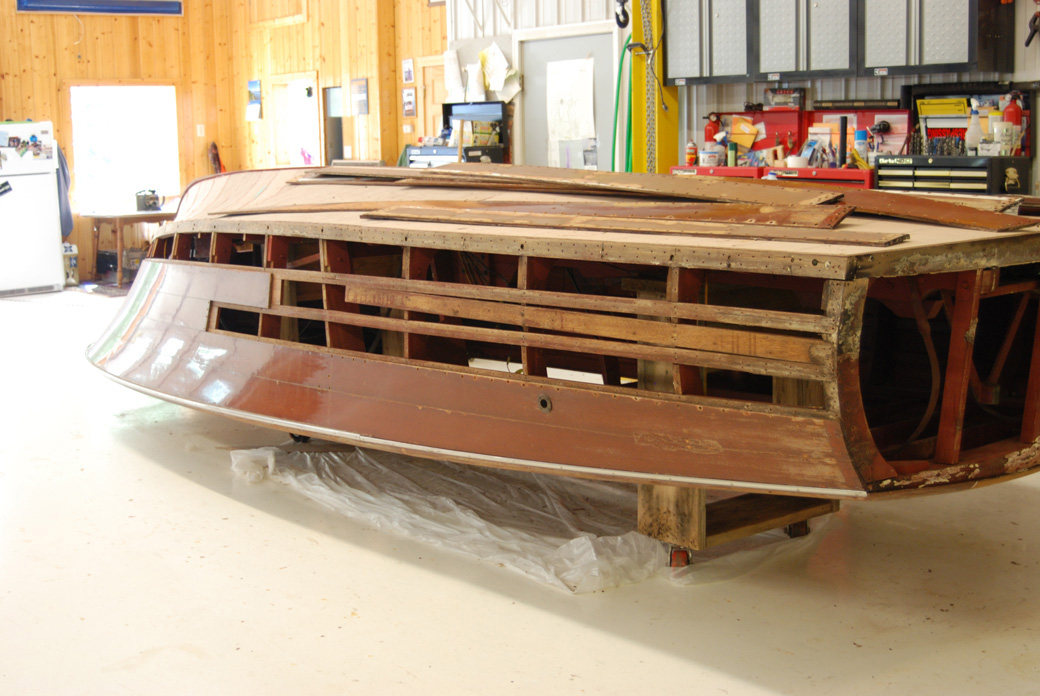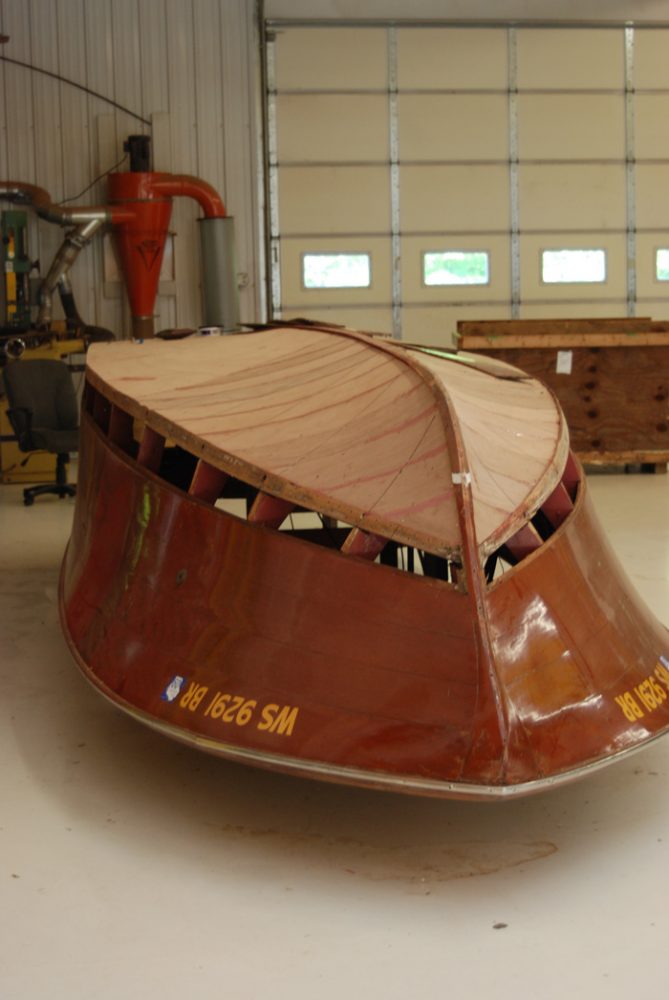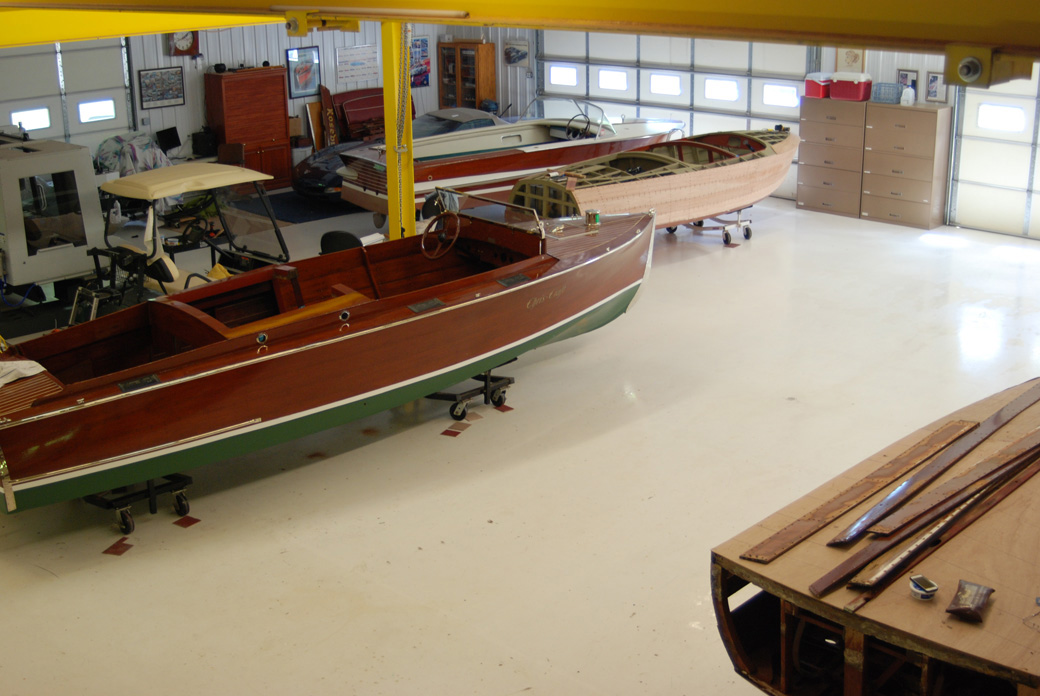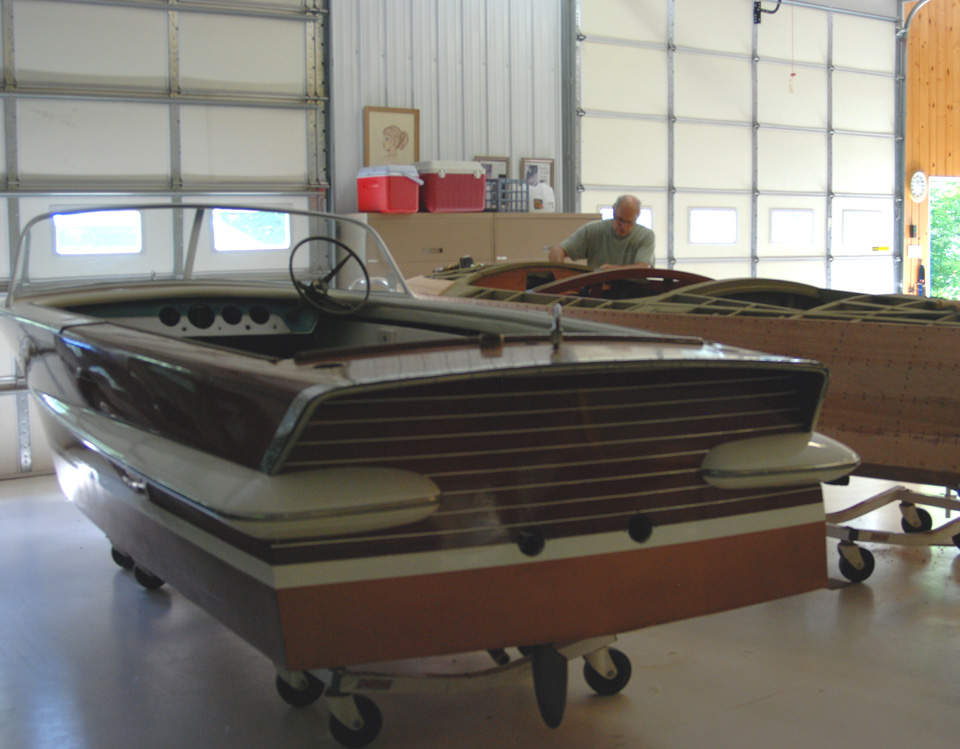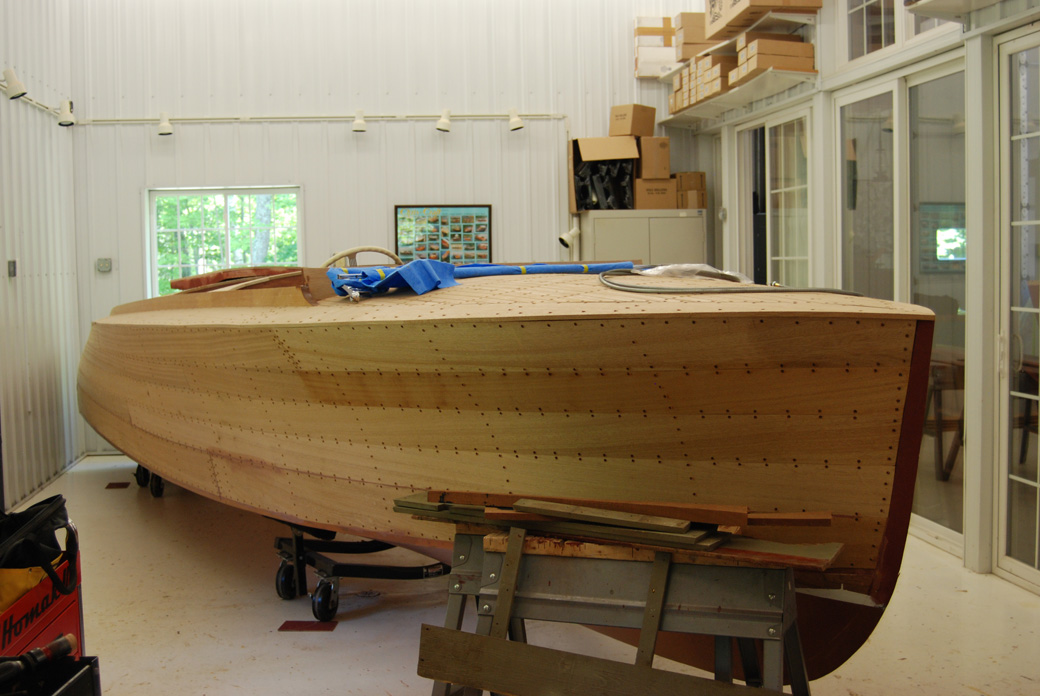Crandon man returns wooden boats to their original glory
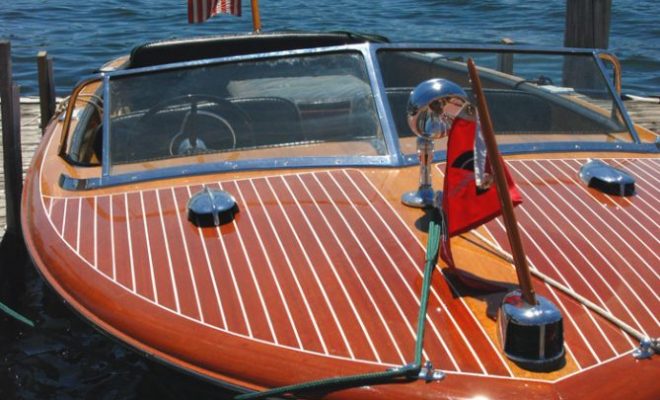
Story and photos by Lori Adler
It was the late 1980’s when Steve Bunda of Crandon first became interested in wooden boats and their restoration. With the help of two mentors, one skilled in wood working, the other in engine repair, Steve bought his first boat and began the restoration process. He seemed to have the knack for it and after a while word got out, and before long people were asking Steve to restore their boats. And so began his business.
His work revolves around mahogany boats, mainly Chris Craft but some others, too, such as Century and Garwood. The boats are antique (built prior to World War II) and classic (built after World War II and up to the mid 1960’s) and are generally runabout or utility models. Steve’s shop specializes in bottoms, and this is often the main issue with antique boats.
“Bottoms were originally designed to last just seven years,” Steve said. A huge portion of his business, therefore, is replacing bottoms. He has replaced at least 75 of them and has worked on hundreds of boats over the years. It’s a long process. Bottom replacement is usually done during the colder months, but this process can take the entire winter, and a full restoration of these antique and classic boats can take up to a year to complete.
Steve’s customers are mostly regional, but knowledge of his expertise travels so it is not unusual for someone to ship in a boat from a long distance away. Every boat requires a different level of restoration; some need new bottoms and some need everything. Each boat is a one-of-a-kind as well.
“They all have their individual feel and personality,” Steve said, adding that while a lot of models and styles of wooden boats were built, not many of any one model were made. Sometimes only 100 or fewer of a particular model were built, increasing the likelihood that Steve and his shop will see a unique boat with each new customer.
Mahogany boats generally need restoration for one main reason, besides age. Wooden boats were intended to be hung in boathouses. In fact, wooden boats come with rings for that purpose. As they were suspended in a humid environment just above the water, the damp air kept the boat’s wood planks in a constant swollen state, making the boat water tight. The detriment of most wooden boats these days is due to exposure to the elements. This is why a restored bottom is a must for any wooden boat. When Steve replaces the bottom, he is not just replacing the mahogany planks; he is adding a layer of a special adhesive caulk to the bottom before replacing the planks. This creates a water-tight seal.
Some boats need more than just a bottom replacement; some need substantial work. To assess what all needs to be done, the bottom is first removed from the boat and the framework is checked for needed repairs. Once the frame and bottom are complete, the topsides and deck are repaired, replacing damaged planks with new wood. The boats are then striped and sanded, stained and finally varnished. It takes 12 coats of varnish to restore a wooden boat to its former glory. For boats that require additional repair, such as engine work, re-chroming of hardware, or restoration of gauges, Steve sends those items to various shops around the region. Finding parts is never an issue for Steve either. He said it is easy to locate parts on Ebay, through dealers, or by using reproduction parts. And if needed, Steve’s shop has a CNC machine which can be used to make parts.
“It’s a myth,” Steve said, “that wooden boats require a lot of work to maintain.” Once a boat is restored, the owner simply needs to change the engine oil and store the boat in a boathouse or covered lift when not in use.
“The key,” he noted, “is to keep it out of the sun, out of the elements.” Then, every 10-15 years or so, a varnish refresh is recommended when three or four coats of varnish should be added. This time frame is just a suggestion; it’s been 20 years since one of Steve’s boats, a 1937 Chris Craft 22-foot custom triple cockpit named “Laurie Beth” was restored.
Wooden boats not only last a long time when treated properly, “they hold their value better,” Steve added.
In addition to the repair and restoration of these antique boats, Steve also helps people find boats to buy.
“Some of the best boats are traded by collectors,” Steve said. It helps that he’s been in the business a long time; his large network of collectors and restoration specialists makes sourcing boats for others an easy task. Sometimes, a customer will come to him looking for a specific boat which he then both locates and restores.
It’s no secret that Steve loves what he does. It’s evident in the care of his workmanship and the passion in his voice when talking about these old boats.
“Everyone is good at something,” Steve acknowledged. “You just need to find your niche…if you enjoy it, it’s not work.”
For more information on Steve’s shop, visit antiquewoodboatrestoration.com.
Leave a reply
You must be logged in to post a comment.

